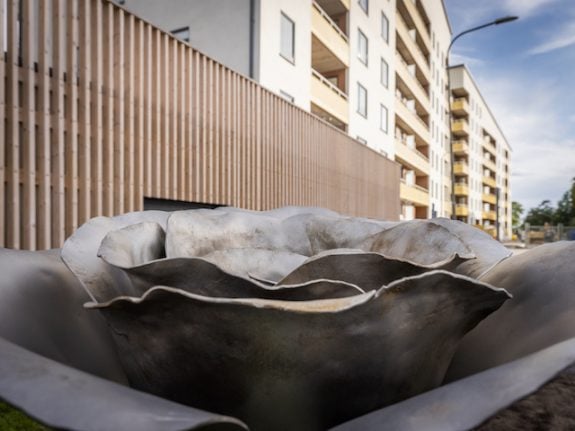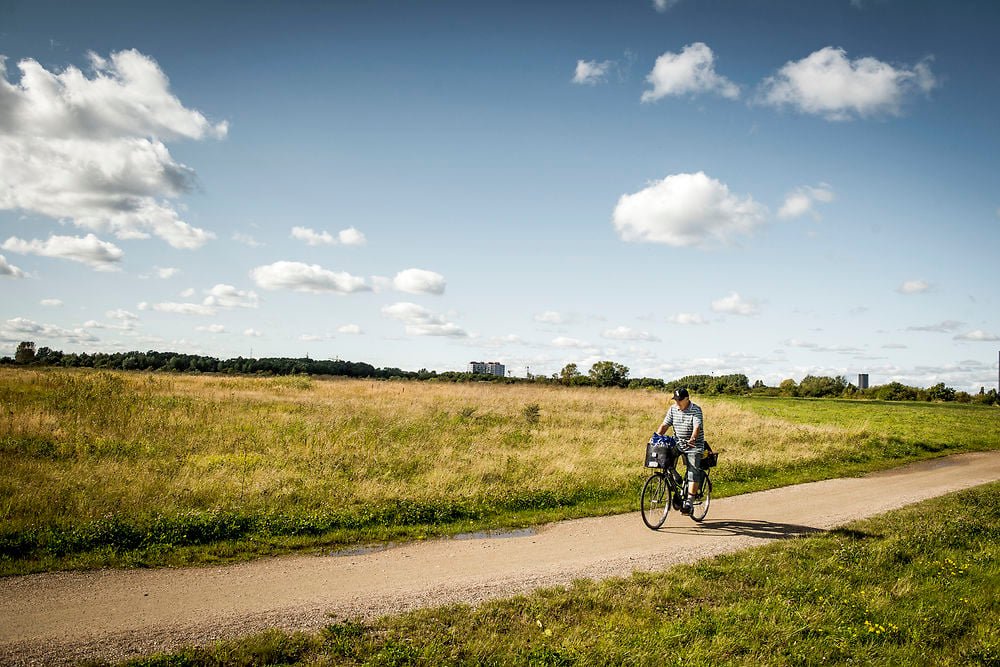The Alba Lilium project in Bredäng, a suburb where 70 percent of residents have an immigrant background, is just one example of this partnership in action. The artistic collaboration between JM AB and a local school in the area coincides with the Swedish property developer’s plans to build 137 rental apartments in Bredäng.
“We wanted to do something for those who live in this neighbourhood; to create engagement and to do more than just build apartments in the area. And also for the students to contribute to the neighbourhood and boost their self-confidence,” Magdalena Carlstein, business developer at JM, tells The Local.
Pupils in the seventh grade at the local Slättgårdsskolan participated in a competition to produce a piece of art that would reflect their community. The winning entry was done by four students and featured a red rose on a stone tablet. Both the winners and Carlstein agreed that it reflected the diverse community.
“Many people have prejudices about Bredäng, that there are many immigrants here and that they won’t have a successful future. We wanted to show that you can succeed wherever you come from. The rose is a symbol for it…there is a light at the end of the tunnel,” said the winners.



 Please whitelist us to continue reading.
Please whitelist us to continue reading.